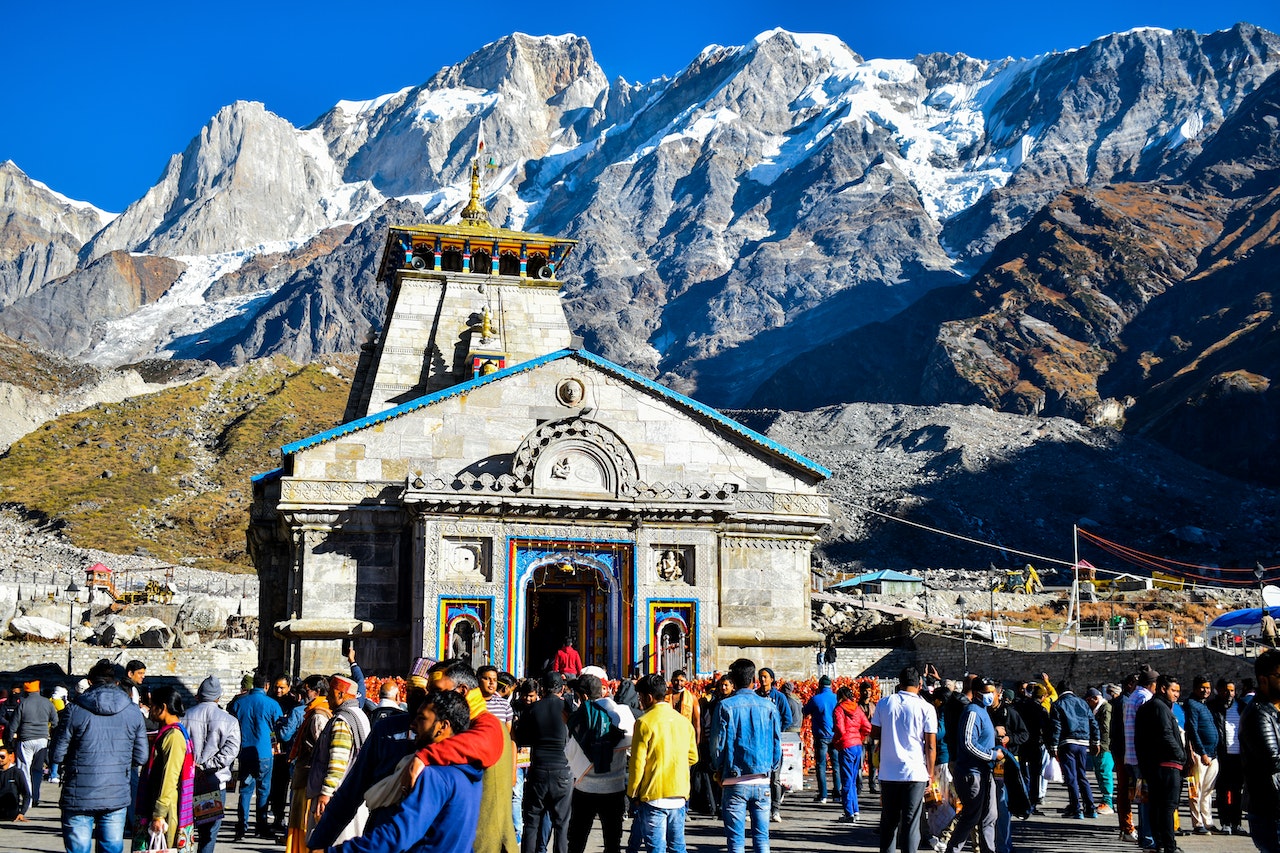Our Latest Blog

Kedarnath Jyotirlinga – The Divine Abode in the Himalayas
Kedarnath Jyotirlinga
“Jai Kedar! Tucked amidst the snow-kissed peaks of the Garhwal Himalayas, Kedarnath stands as a spiritual jewel and a testament of unwavering devotion.”
ओं नमः खेदाराय नमः
Location:
- State: Uttarakhand
- District: Rudraprayag
- Altitude: 3,583 meters (11,755 ft) above sea level
- Situated on: Banks of the Mandakini River
- Nearest Town: Gaurikund (16 km trek from here)
- Reachability: Accessible only by trekking, helicopter service, or pony/palanquins during the open months (April/May to November)
History and Mythological Significance:
Kedarnath is generally considered to be one of the oldest and most powerful Jyotirlingas in Hindu mythology with immense historical significance. It is said that this holy place was originally founded by the Pandavas, who were the great heroes of the Mahabharata period, a time filled with history and war. After the horrific Kurukshetra War, which filled their hearts with remorse and grief, the Pandavas went to Lord Shiva to seek his blessings to cleanse themselves of their sins and misdeeds. In a strange turn of events, Lord Shiva, not wanting to forgive them easily, decided to hide in the sacred Himalayas to escape their pursuit by assuming the guise of a magnificent bull. But Bhima, the strongest of the Pandavas, understood the true nature of divinity and managed to hold onto the bull's hump with determination. In a mysterious turn of events, Lord Shiva then disappeared into the ground, leaving only his hump on the surface, which later became the holy Kedarnath Jyotirlinga, a place of worship and adoration for millions of devotees.
Kedarnath is considered an important and integral part of the holy Panchkedar temple circuit, which is very important for most devotees.
Beliefs and their significance
- It is believed that a pilgrimage to Kedarnath brings salvation and washes away sins.
- This holy place is known as one of the four Dhams in the beautiful state of Uttarakhand, and is also included in the very sacred Chhota Char Dham Yatra pilgrimage.
- This temple is the tallest of the 12 Jyotirlingas and is a symbol of endurance, peace and penance.
Architectural Style:
- The temple is made of large, heavy and highly decorated blocks of grey stone that have been cut in a uniform manner.
- There is no mortar between the stones, and surprisingly, it has survived for centuries, standing strong and sturdy despite being subjected to centuries of weather and harsh weather.
- The temple we see today was built by the famous philosopher and theologian Adi Shankaracharya during the 8th century AD and was built over the old site of the original Pandava temple.
- The temple has a beautiful pyramidal structure and is built in the traditional style of architecture prevalent in North India.
Special Features:
- The lingam is one that has formed naturally, commonly known as Swayamba.
- Immediately behind the temple is a prominent cone-shaped rock that many believe to be the back of Lord Shiva.
- In 2013, there was a heavy flood in Kedarnath, but the temple was not damaged, as it was protected by a sacred rock (known as "Bhim Shila") behind the temple and prevented the flood.
Rituals:
- Morning worship includes the holy Shiva Abhishek, which is performed with a mixture of water, milk, honey, ghee and holy Bilina leaves.
- The evening aarti is beautiful and divine, with Vedic hymns and lamps lit.
- Devotees can perform Rudrabhishek, and advance bookings are made for special worship.
- The temple remains open during April/May (Akshaya Tritiya) and remains closed during October/November (Bhai Bij).
Weather forecast:
- Summer (May-June): Pleasant and best time to visit
- Monsoon (July-September): Heavy rains, possibility of landslides
- Winter (November-April): Snowfall; the temple remains closed and the deity is shifted to the Omkareshwar temple at Ukhimath.
Nearby Places and Attractions
- Bhairavnath Temple (Guardian of Kedarnath, 500 m away)
- Adi Shankaracharya Samadhi
- Gauri Kund (Hot spring, starting point of trekking)
- Vasuki Tal, Chorabari Tal (Gandhi Sarovar) for trekkers
- Breathtaking and vast panoramic views showcasing the majestic Kedarnath peak, the majestic Kedar Dome and the dramatic Mandani Peak.
Other Points of Belief
- The spiritual energy here is very high, to the extent that it is said that one can actually feel and sense the presence of divine powers around them.
- Despite the tragic events that took place in 2013, the temple remains a strong and enduring symbol of unwavering faith that dispels any kind of fear.
- Helicopter trips can be booked for the elderly or those in a hurry.
Mythological and Devotional Significance:
- Mentioned in the Skanda Purana and the Mahabharata.
- It is believed that this is the actual place where Lord Shiva forgave the Pandavas for their past deeds.
- Spiritual seekers believe that meditating at Kedarnath leads to Moksha (salvation).
Travel Guide and Tips:
- Pack warm clothes even during summers
- Get well-acclimated before starting the trek
- Book accommodation and helicopter services in advance.
- Always maintain buffer days due to weather conditions.
“Kedareshwara Mahadeva, the icy silence of the Himalayas echoes your name. In the lap of nature, faith finds its true meaning.”